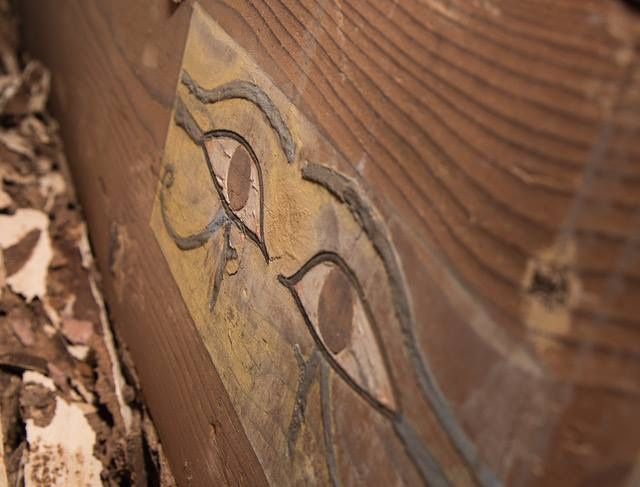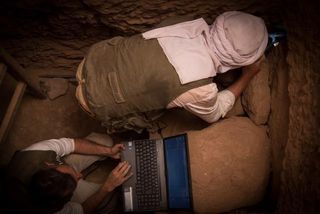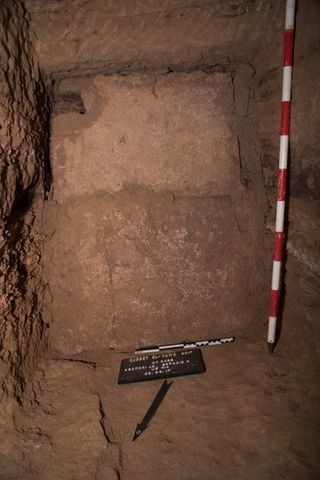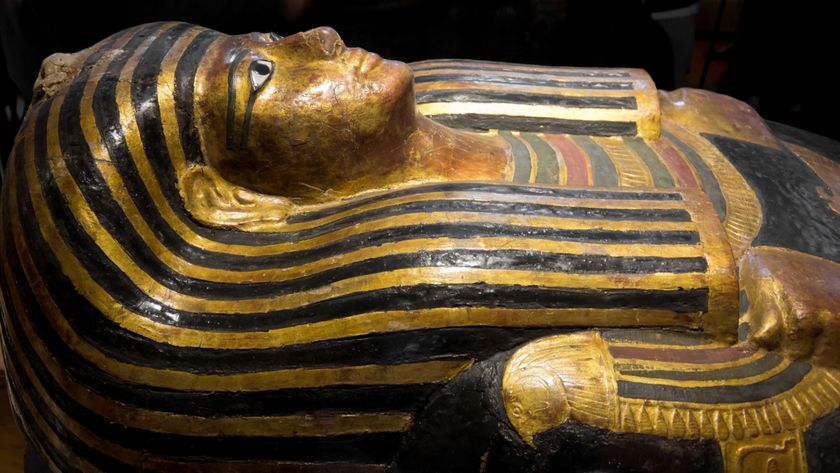Mummy of Ancient Egyptian Nobleman Discovered Along Nile River

A tomb holding the mummy of Shemai, the younger brother of a powerful governor in Egypt, has been discovered near Aswan, Egypt, along the Nile River. The structure dates back more than 3,800 years, archaeologists said.
About 14 members of Shemai’s extended family have been found so far in Egypt, with recent research indicating that women played a vital role in this family, acting as "bearers of legitimacy," one Egyptologist said.
The newly found tomb structure appears to hold multiple burials, as archaeologists discovered two coffins, at least one mummy, and wooden models of boats and people. Additionally, part of the structure was robbed in ancient times and another part of the tomb has yet to be excavated, said Alejandro Jiménez-Serrano, an Egyptologist at the University of Jaen in Spain, who is leading the team that excavated the tomb. [In Photos: 3,800-Year-Old Coffin Holds Ancient Egyptian Woman]
An inscription on one of the coffins says that it contained the burial of Shemai, who was a younger brother of Sarenput II, a governor of Elephantine and a military general during the reigns of pharaoh Senwosret II (reign circa 1887–1878 B.C.) and pharaoh Senwosret III (reign circa 1878–1840 B.C.).

"We have found the mummy-body of Shemai, but we left him in his original position, in his coffin. The next year, we will have the opportunity to look [at] his face," Jiménez-Serrano told Live Science.
The structure was found at Qubbet el-Hawa, which translates to "Hill of the Wind," and was located near the southern border of Egypt in ancient times. A necropolis for nobles of the ancient city of Elephantine (on Elephantine Island in the Nile River) was erected at Qubbet el-Hawa. The mummified body of Sarenput II's second daughter, Sattjeni, was also found at the site.
While surviving historical texts record the life of Sarenput II, little information has survived about Shemai. The discovery is important "not only for the richness of the burial, but [also because it] sheds light on those individuals who were under the shadow of the power," the Egyptian Ministry of Antiquities said in a statement.
Sign up for the Live Science daily newsletter now
Get the world’s most fascinating discoveries delivered straight to your inbox.
In 2018, the archaeological team will return to the tomb to continue excavations and study of the coffins, said Jiménez-Serrano. He told Live Science he hopes the upcoming season will yield more information about what role Shemai played in the history of Egypt.
Large family
Finding so many family members at the site has been a boon for archaeologists: "Such high numbers of individuals provide a unique opportunity to study the [living] conditions of the high class in Egypt more than 3,800 years ago," said the Ministry of Antiquities.

Examination of the 14 family members has revealed that, even though ancient Egypt is often regarded as being a patriarchal (male-dominated) society, woman played an important role in this family, Jiménez-Serrano said.
"Under my point of view, the most exciting find from this family is that women played a fundamental role in the family. They were the bearers of the legitimacy, which was coming from a deified ancestor. Thus, they had divine blood in their veins," Jiménez-Serrano said.
DNA analysis of the 14 family members could reveal a great deal of additional information, Jiménez-Serrano said, but to date, the Egyptian antiquities ministry has declined to authorize such a study.
Original article on Live Science.

Owen Jarus is a regular contributor to Live Science who writes about archaeology and humans' past. He has also written for The Independent (UK), The Canadian Press (CP) and The Associated Press (AP), among others. Owen has a bachelor of arts degree from the University of Toronto and a journalism degree from Ryerson University.


